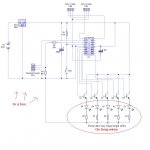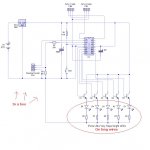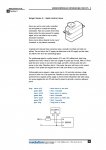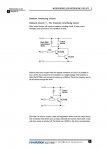Andrew Cowan
Senior Member
Hi!
I have completed building the lighting circuit for my rc car.
I responds to steering and throttle controls with lights (indicators and reversing/braking lights). However, I want to also make it so that when the transmitter is turned off, all the lights flash.
Note I have put a connector in the PCB - this connects the lights (all over the car on wires
), to the PCB.
There is, however a slight problem.
When the connector is disconnected, so the lights and wires are not connected to the car, there is no problem when the radio is turned off. The signal is at 0 (measured with pulsin). The servos in the car do not move.
This is what I expected.
When the connector is connected, there is a change. There is a huge amount of interference, the servos go crazy, and there is not a fixed pulsin signal.
I cannot understand this, as the reciever is only connected to the PIC board via 0V and signal. Why is it that the lighting part of the circuit is making interference?
Once the transmitter is turned on again, all interference goes, and the car works normally.
Andrew. Any ideas?
PS - apart from this interference, the circuit works perfectly.
I have completed building the lighting circuit for my rc car.
I responds to steering and throttle controls with lights (indicators and reversing/braking lights). However, I want to also make it so that when the transmitter is turned off, all the lights flash.
Note I have put a connector in the PCB - this connects the lights (all over the car on wires
), to the PCB.
There is, however a slight problem.
When the connector is disconnected, so the lights and wires are not connected to the car, there is no problem when the radio is turned off. The signal is at 0 (measured with pulsin). The servos in the car do not move.
This is what I expected.
When the connector is connected, there is a change. There is a huge amount of interference, the servos go crazy, and there is not a fixed pulsin signal.
I cannot understand this, as the reciever is only connected to the PIC board via 0V and signal. Why is it that the lighting part of the circuit is making interference?
Once the transmitter is turned on again, all interference goes, and the car works normally.
Andrew. Any ideas?
PS - apart from this interference, the circuit works perfectly.
Attachments
-
57.2 KB Views: 54
Last edited:




